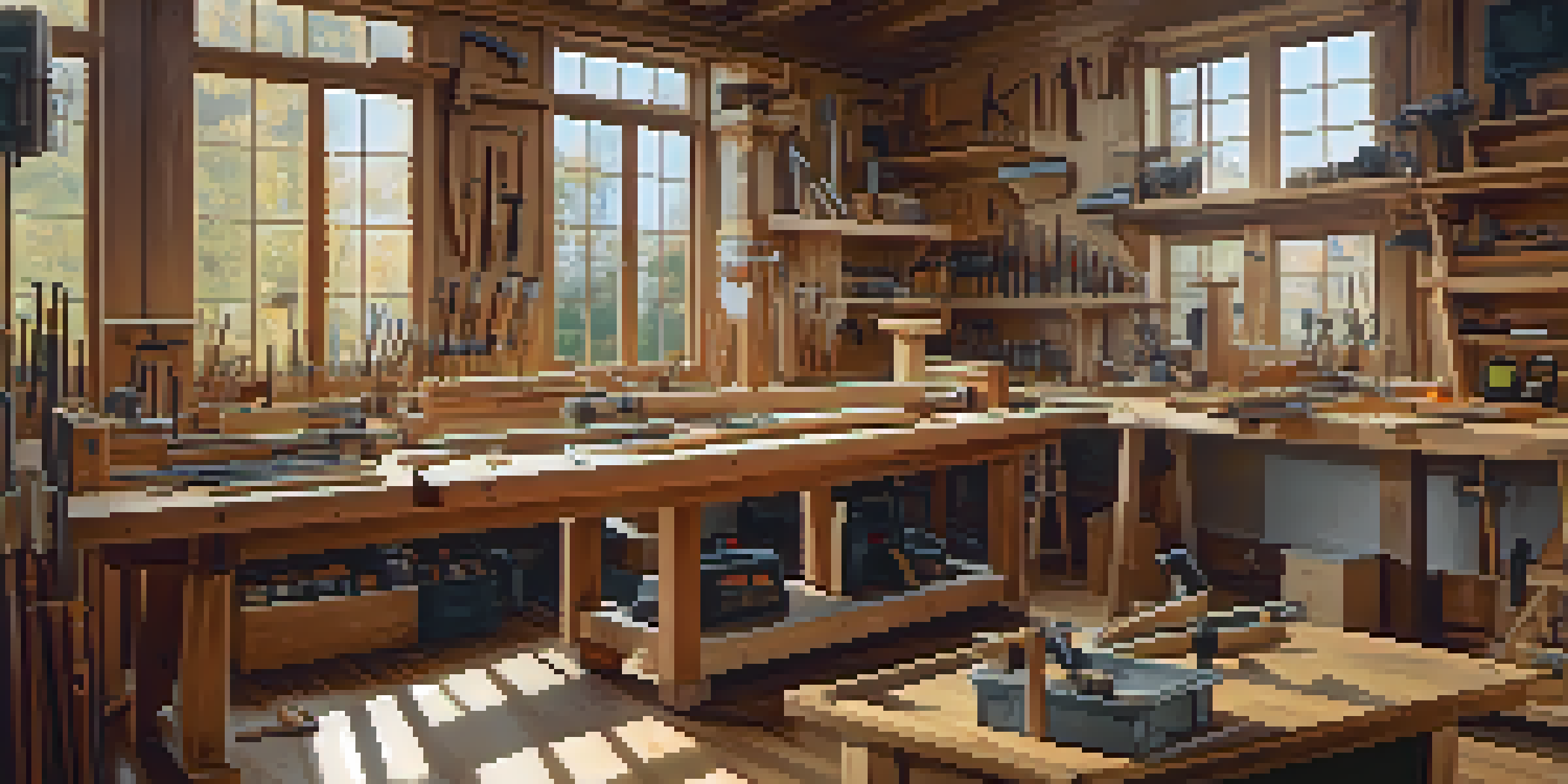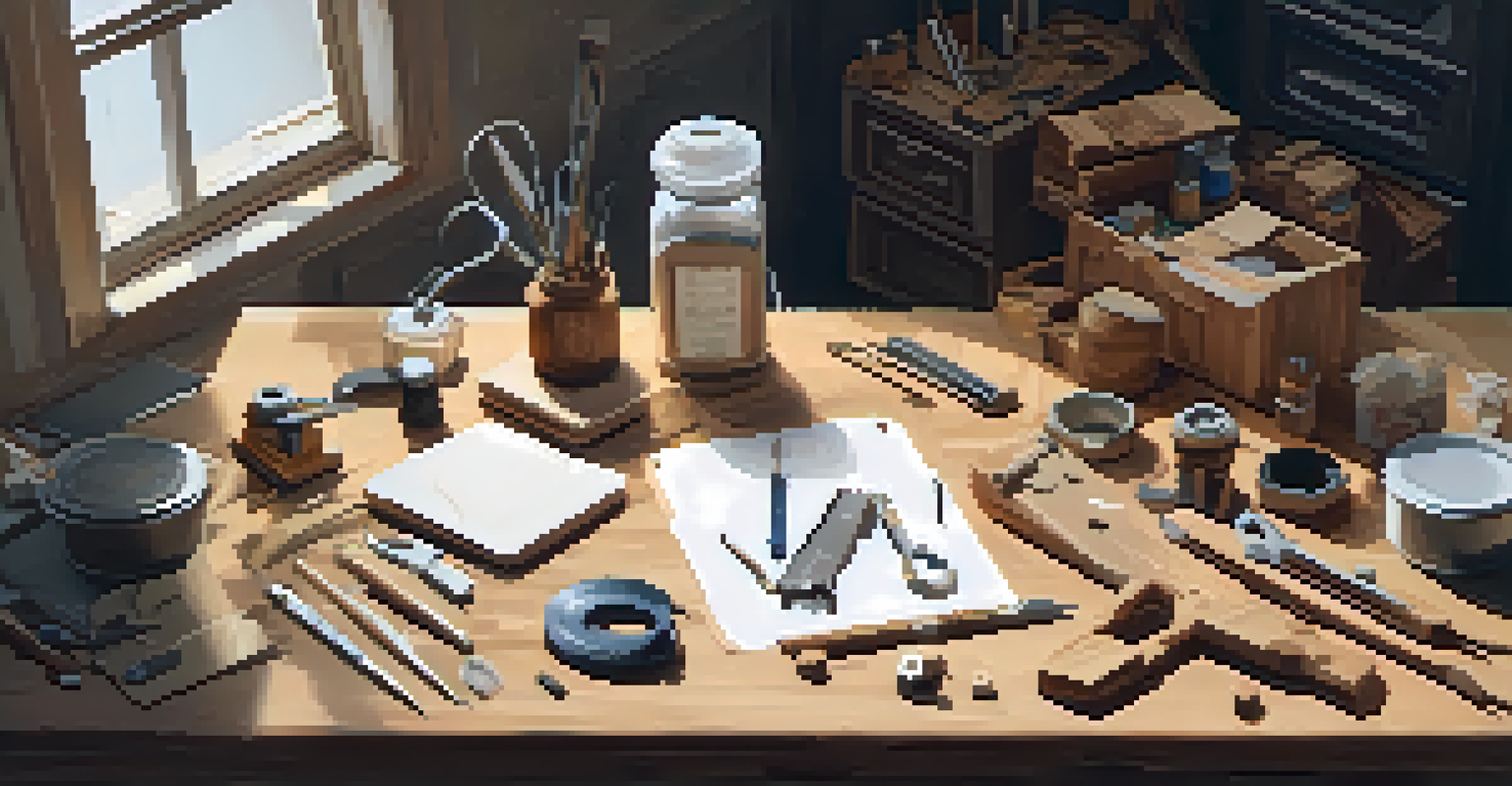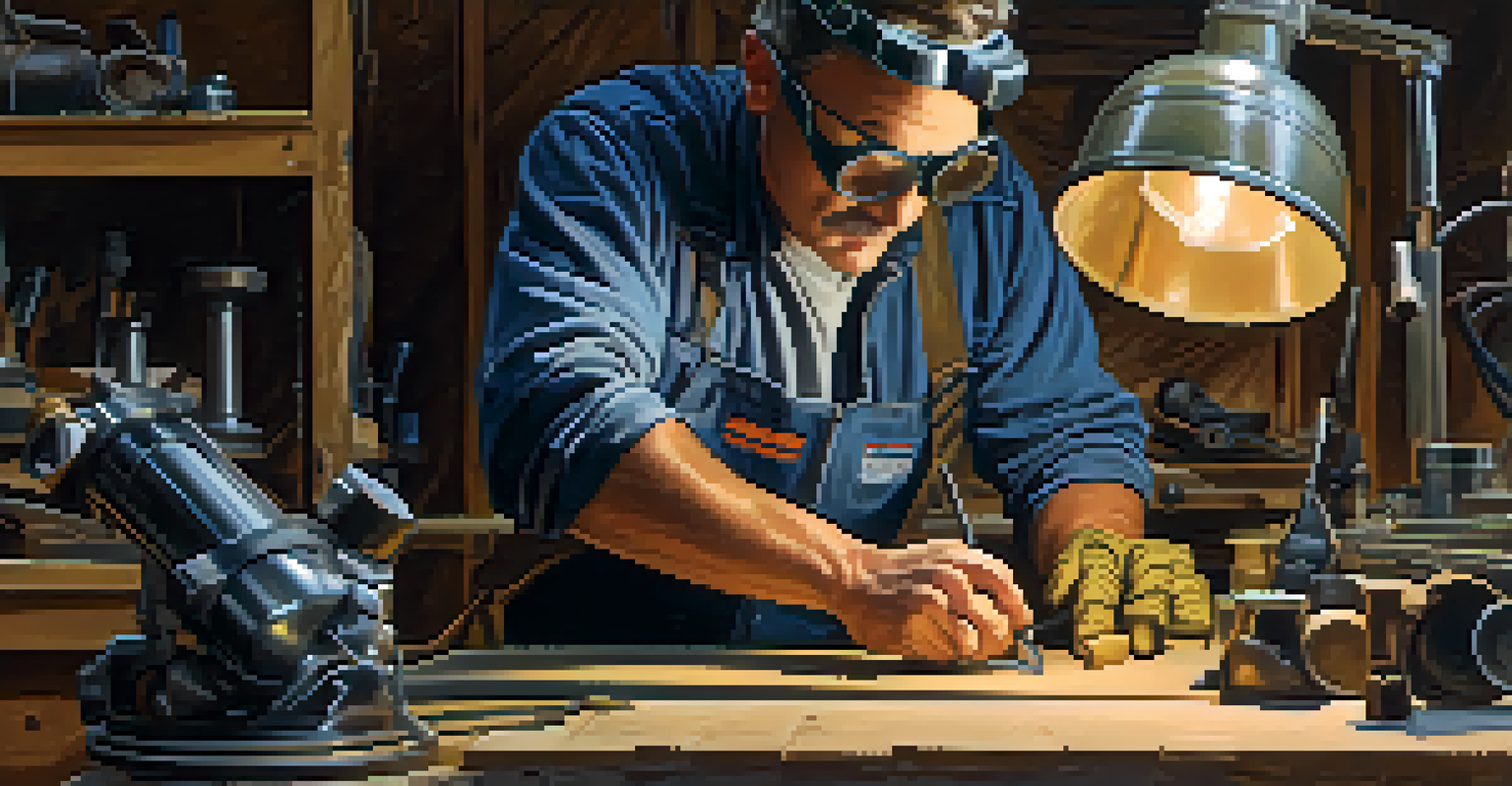How to Set Up a Safe Carving Workspace with Power Tools

Understanding the Importance of a Safe Workspace
Setting up a safe workspace is crucial when using power tools for carving. A well-organized area not only enhances creativity but also minimizes the risk of accidents. Just like a chef needs a tidy kitchen to whip up a delicious meal, a carver needs a clean and safe environment to create their art.
Safety isn't just a slogan, it's a way of life.
Safety begins with knowing your surroundings. Ensure that your workspace is free of clutter, which can lead to tripping or distracting you while you work. Think of it as laying the foundation for a sturdy house—without a solid base, everything else can crumble.
Additionally, understanding the tools you’ll be using is key. Familiarize yourself with each tool’s operation and safety features, much like knowing how to properly handle a sharp knife before cutting vegetables. This knowledge lays the groundwork for a safer carving experience.
Choosing the Right Location for Your Workspace
The location of your carving workspace can significantly impact safety. Ideally, it should be well-ventilated, spacious, and away from high-traffic areas where accidents could easily happen. Think of it as choosing the perfect spot for a picnic—out of the way but comfortable.

Lighting is another crucial factor. A well-lit area allows you to see details clearly and helps prevent mistakes that could lead to injuries. Just like reading a book in good light saves you from straining your eyes, proper lighting in your workspace enhances your focus and safety.
Safety Starts with a Clean Space
A clutter-free workspace minimizes accidents and enhances creativity.
Lastly, consider the surface you’ll be working on. A sturdy, flat table or workbench not only provides stability but also keeps your tools and materials at a proper height. It’s akin to having a solid platform when performing a dance—you need that stability to express yourself fully.
Gathering Essential Safety Gear and Tools
Before you dive into carving, it's essential to gather the right safety gear. This includes protective eyewear, gloves, and dust masks to shield yourself from flying debris and harmful particles. Think of it as putting on a life jacket before heading out on a boat—it's a crucial step to ensure your safety.
An ounce of prevention is worth a pound of cure.
Don't forget about ear protection! Power tools can be loud, and exposure to high noise levels can damage your hearing over time. Just as you wouldn’t ignore a warning sign on the road, make sure to protect your ears while working.
Lastly, keep a first aid kit nearby. Accidents happen, even in the safest environments, and having a kit on hand can make a significant difference. It’s like carrying an umbrella on a cloudy day; you hope you won’t need it, but it’s better to be prepared.
Organizing Your Tools for Easy Access
A well-organized workspace can greatly enhance your efficiency and safety. Store your power tools and carving materials in designated places so you can quickly access them when needed. Imagine a toolbox that’s easy to navigate, just like a well-organized recipe book that makes cooking a breeze.
Using wall-mounted racks or pegboards can help save space and keep tools visible. This setup allows you to grab what you need without rummaging through drawers, much like having your ingredients laid out before you start cooking.
Essential Gear for Protection
Wearing proper safety gear, such as goggles and gloves, is crucial to protect yourself while carving.
Additionally, make it a habit to return tools to their designated spots after use. This simple practice not only prolongs the life of your tools but also keeps your workspace tidy and safe, akin to putting your shoes back where they belong to avoid tripping over them later.
Maintaining a Clean and Clutter-Free Area
Keeping your workspace clean is vital for both safety and inspiration. Regularly sweep up wood shavings and debris that can create slip hazards. Just like a painter needs a clean canvas, a carver thrives in a tidy environment that fosters creativity.
Incorporate a routine cleanup into your carving sessions. Take a few moments to tidy up before starting a new project or after finishing one. It’s similar to a chef cleaning their station between courses—keeping everything organized helps maintain focus.
Use appropriate containers for waste materials to prevent clutter from accumulating. A designated bin for scraps keeps your workspace neat and ensures that you can focus solely on your carving without distractions.
Understanding Power Tool Safety Features
Every power tool comes equipped with safety features designed to protect users. Familiarize yourself with these features, such as safety switches and blade guards, before operating any tool. This knowledge is akin to understanding the safety mechanisms in a car before driving.
Read the user manuals for your tools to ensure you know how to use them properly. Ignoring this step is like trying to bake a complex cake without a recipe—you’re likely to encounter problems along the way.
Know Your Tools and Their Features
Familiarizing yourself with the operation and safety features of your tools is vital for safe and effective carving.
Additionally, consider attending workshops or courses that offer hands-on experience with power tools. Learning from experts can provide invaluable insights and boost your confidence, much like practicing a new skill under the guidance of a coach.
Establishing Safe Work Practices
Creating safe work practices is essential for preventing accidents in your workspace. Always wear your protective gear, even if you’re just doing a quick task. It’s like buckling your seatbelt every time you get in a car—better safe than sorry.
Establish a routine that includes checking your tools before use. Look for any damages or wear that could pose safety risks. This step is similar to doing a safety check on a bike before a ride—ensuring everything is in working order can prevent mishaps.

Lastly, stay focused while working. Avoid distractions and keep conversations to a minimum in your workspace. Just as a musician needs to concentrate during a performance, carving requires your full attention to ensure both safety and quality.